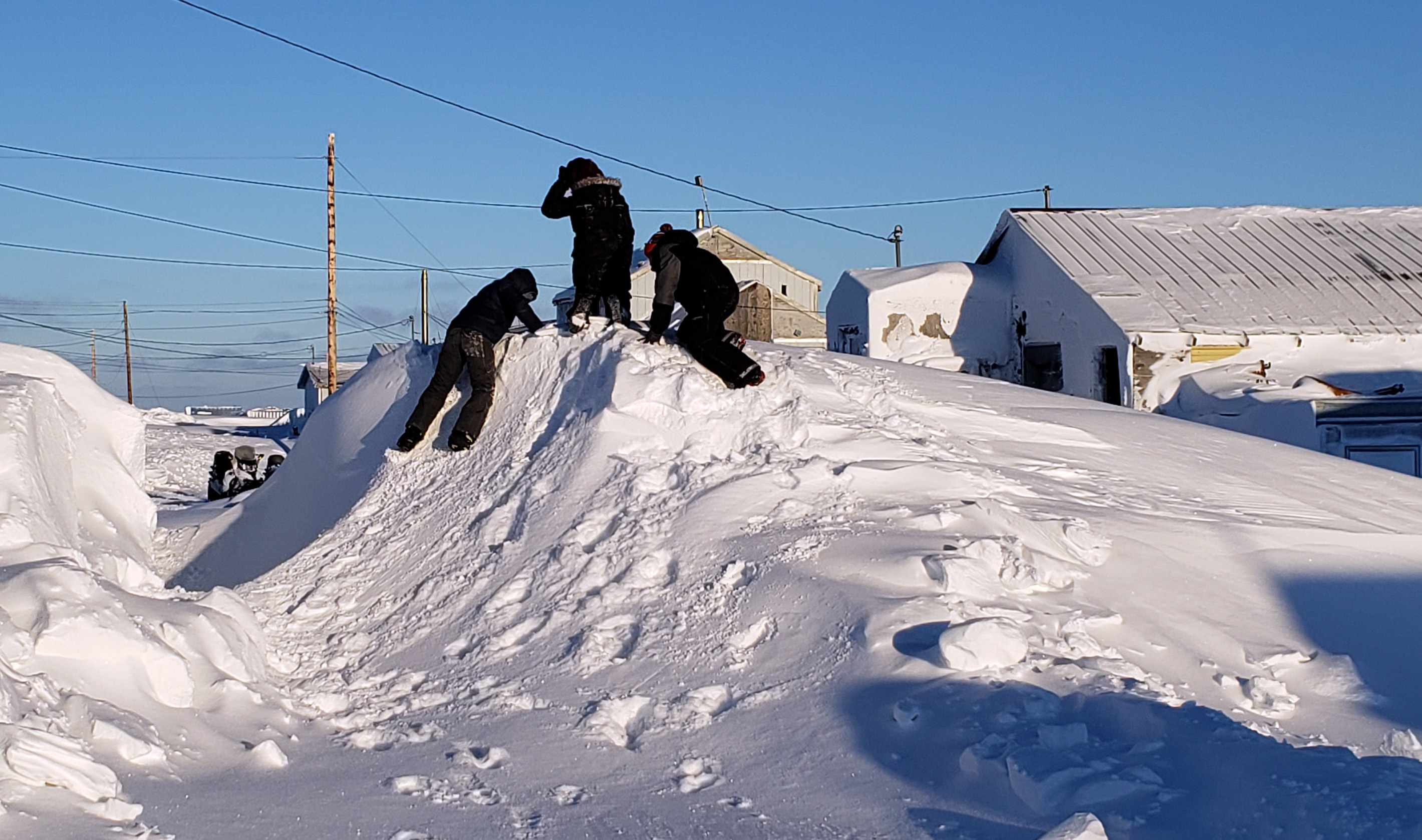'Dirty snow' project connects scientists, students

Students in Shishmaref play on snow drifts after a storm with high winds in February 2021. They were headed to field sites to measure snowpack and pH levels, and collect snow samples to assess the concentration of light-absorbing particles.
Jeff Richardson
907-474-6284
Dec. 20, 2021
University of Alaska Fairbanks scientists are presenting their work at the American Geophysical Union’s fall meeting in New Orleans this week. This article is part of a series highlighting UAF research from the world’s largest Earth and space science meeting.
A recent University of Alaska Fairbanks-led project encouraged a far-flung group of K-12 students to pursue local research questions by examining “dirty snow” in their communities.
The project was offered as a five-week virtual course last spring. In all, 10 students offered cloud observations and on-site measurements of snow depth, pH and light-absorbing particle concentrations.
In Shishmaref, students sampled snow next to the village drinking water pond and a popular berry picking site to determine the quantity of particles that could be entering their water and food supplies. In Helena, Montana, students measured the local effects of wood smoke pollution. Other participants were from locations like Dillingham, Takotna and Kansas.
The virtual course — which started as a 365 Smart Academy course offered by both UAF Summer Sessions and Lifelong Learning, and the Arctic and Earth STEM Integrating GLOBE and NASA project — provided a rare opportunity for students to guide the research that scientists focus on.
“The work that students are doing directly informs what scientists are working on,” said Christi Buffington, a science education specialist at UAF’s International Arctic Research Center. “Having students choose their own research questions that also match up with the questions on these climate models is super interesting.”
The students’ data could ultimately provide ground-truthing for satellite information being studied by NASA scientists. It also offers them a link between locally relevant topics and global-scale climate issues.


